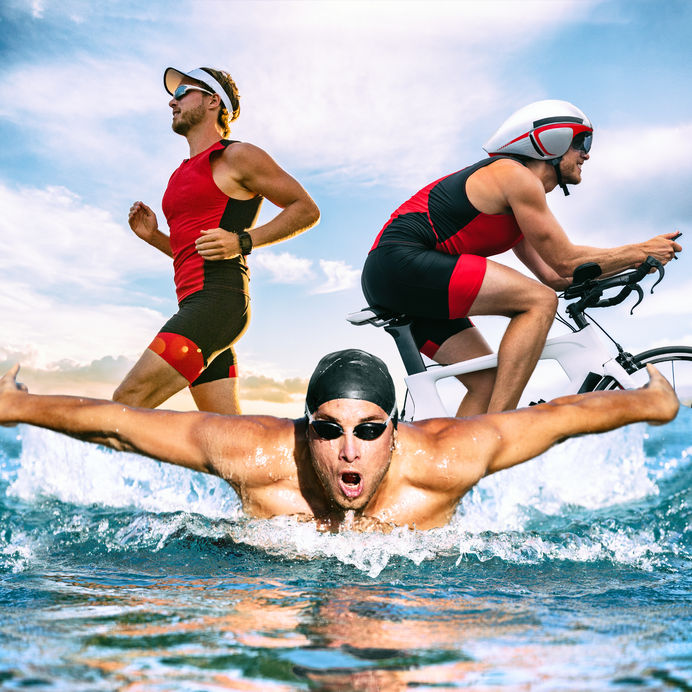Every certified personal trainer should have a solid grasp on the SAID principle. SAID is an acronym that stands for:
Specific Adaptation to Imposed Demands
The SAID principle says every sport poses its own unique demands and that in order to improve skills unique to a particular sport, it’s best to practice the moves used in that sport.
SAID says that adaptations in human physiology do not occur in a vacuum. Rather, they are responses to the specific demands imposed upon them. The body responds to a given demand, whether biomechanical or neurological, with a specific, predictable adaptation.
And while this principle seems logical and largely self-evident, this was not always the case.
From General to Specific Adaptations
In 1958, Franklin M. Henry, a professor of Physical Education at the University of California-Berkeley proposed the “Specificity Hypothesis of Motor Learning”.1 Henry’s work built on research conducted more than half a century earlier on the specificity of mental function.2
The specificity hypothesis used experimental data to challenge a traditional, accepted practice of formal discipline in education. Specifically, learning a specific, “difficult” subject in school had a carryover effect on the mind’s ability to learn other subjects. Henry extended this hypothesis to the area of motor learning. By providing experimental data to demonstrate that sensory stimuli and movement are closely associated, Henry’s work showed that physical training specificity is necessary to yield meaningful results.
The SAID principle is often used today as a guideline, one that emphasizes that all training is specific to a particular task. In other words, specific skills or training may not necessarily carry over to other, distinct activities, whether they involve physical training, intellectual training, or a measure of both.
The SAID principle applies not only to learning new motor skills, but relearning ones that may have been lost through illness or injury. For this reason, the principle is used extensively in the field of physical rehabilitation, where specific exercises are used to involve certain muscles or muscle groups.
SAID Not Limited to Mechanics
As mentioned, the SAID principle is not confined solely to biomechanical phenomena. As someone learns physical skills through repeated practice, there are physical changes to the structure of the brain, as well. For example, typing skills improve through repeated use, as do those used to play a musical instrument.
This is because memories of the skills needed to perform these activities are stored in areas of the brain where they can be called up and executed with little to no conscious effort. The neurons that conduct the signals necessary to perform these activities develop increasingly efficient lines of communication among themselves.
Transferred to the world of sports that are more physically demanding, that means that in order to improve at basketball, you need to play more basketball and focus on developing the individual skills used in the game, such as dribbling, passing, shooting, and jumping.
Checkers to Chess?
From a purely physical standpoint, the muscles used to move a disk on a checkerboard are identical, or at least, very similar, to those used to move a pawn or a bishop, yet the thought processes behind the movements in checkers and chess differ in some important ways.
What about carryover? Will playing checkers make you better at playing chess? You may indeed be adept at moving playing pieces, but it isn’t likely you will last long against an opponent who knows the specific rules and objects of the other game. Likewise, preparing for a volleyball match by working on basketball skills is not as likely to have as positive an effect as simply focusing on volleyball fundamentals.
A more extreme example involves training in sports that require conditioning in vastly different areas of aerobic and resistance training. Let’s say that a bodybuilder is playing a game of football. He may look convincing in the role, but his performance in the game might be less than stellar because the training demands imposed by football are vastly different than those to which he is accustomed at the gym.
SAID and the Role of Cross-Training
This brings us to the importance of cross-training, which is another way of saying “training in different athletic endeavors unrelated to your primary sport”. In order to achieve optimal general functional fitness, equal measures of aerobic, multidirectional exercises, varied sports activity, resistance training, and flexibility/mobility exercises should be practiced. It is important to realize that cross-training techniques, properly applied and focused mainly upon a particular activity component, will enhance someone’s performance in that sport.
[sc name=”resistance” ][/sc]
References
1. Henry, F. Specificity vs. generality in learning motor skills. in 61st Annual Proceedings of the College of the Physical Education Association. 1958. Santa Monica, CA.
2. Thorndike, E.L., Woodworth, R. S., The influence of improvement in one mental function upon the efficiency of other functions. Psychological Review, 1901. 8: p. 247-261.
3. Foran, B. (2001). Editor. High-Performance Sports Conditioning. Modern Training for Ultimate Athletic Development. Champaign, IL: Human Kinetics.



